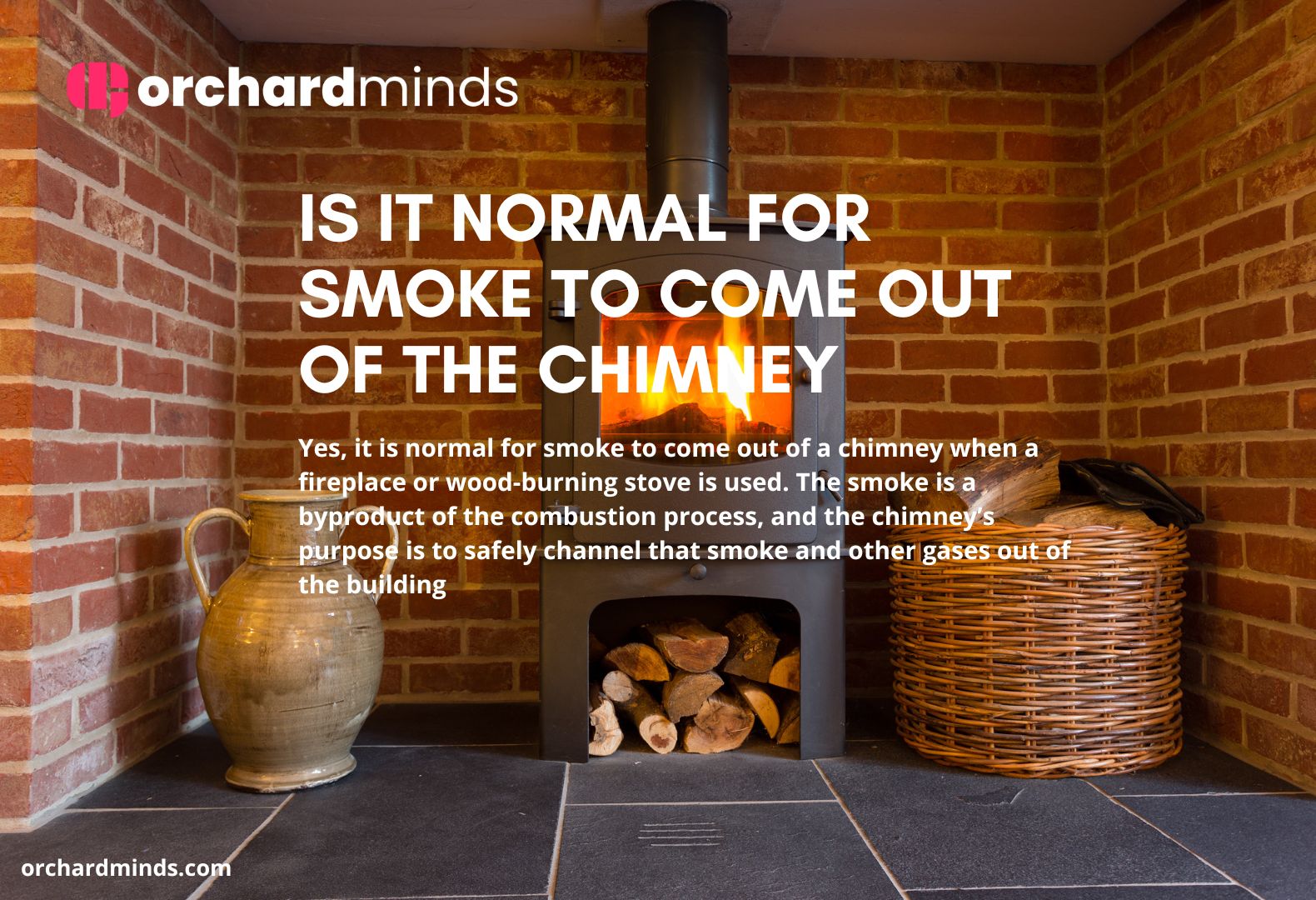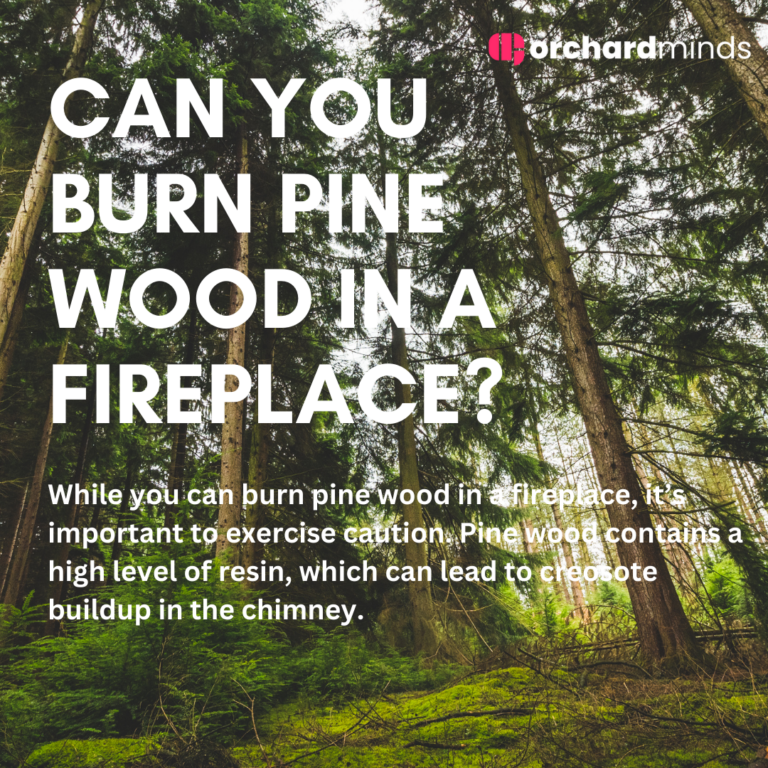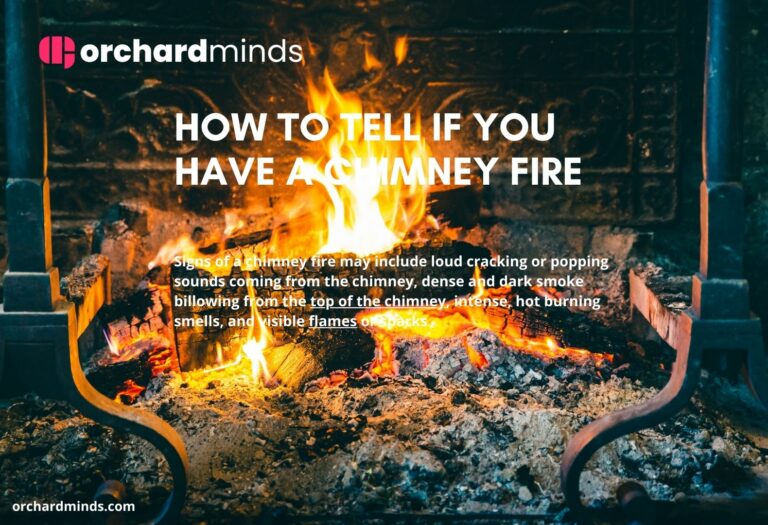Is it normal for smoke to come out of the chimney? Yes, it is normal for smoke to come out of a chimney when a fireplace or wood-burning stove is used. The smoke is a byproduct of the combustion process, and the chimney’s purpose is to safely channel that smoke and other gases out of the building. However, suppose the smoke is excessive or unusually dark. In that case, it may indicate an issue with the combustion efficiency or ventilation system and should be checked by a professional to ensure safety and efficiency.
What Does It Mean When White Smoke Comes Out of Chimney Flue?
When white smoke comes out of a chimney flue, it typically indicates that the burned fuel is burning efficiently and properly combusting. White or light-grey smoke suggests that the fire is well-oxygenated and the moisture content in the wood or fuel is low. This is generally a good sign, as it means the combustion process is clean, and there is little to no unburned fuel or soot particles in the smoke. However, it’s essential to monitor the colour and consistency of the smoke, as any changes may indicate a shift in combustion efficiency or other issues that should be addressed.
White Smoke Origins
White smoke, often seen coming from chimneys, is primarily the result of water vapour or steam produced during the combustion of certain fuels. When the combustion process is efficient, and the fuel is dry, the heat generated during the process can vaporize the moisture within the wood or other fuels, creating white smoke as it exits the chimney. This is a sign of clean and effective burning. In some cases, white smoke can also be caused by releasing volatile organic compounds from the fuel source, which can vaporize and create a visible plume.
Issues With Plumbing
Plumbing, or the visible release of white or light-coloured smoke from a chimney, can sometimes signal issues that need attention. While white smoke is generally a sign of efficient combustion, excessive plumbing or specific changes in plume colour or consistency can indicate problems. Issues that may cause plumbing include:
- Incomplete Combustion: If the fire is not getting enough oxygen, it can lead to incomplete combustion, resulting in excess smoke and soot. This can be due to a restricted air supply or improper draft in the chimney.
- Wet or Unseasoned Wood: Burning damp or unseasoned wood can lead to excessive plumbing because of the water content in the fuel. It’s essential to use correctly seasoned wood with low moisture content.
- Poor Insulation: In cold weather, a poorly insulated chimney can cause the smoke to cool and condense before it exits the flue, creating visible plumes. Adequate insulation can help prevent this.
- Appliance Issues: Malfunctioning or improperly maintained stoves or fireplaces can lead to plumbing. Regular maintenance and servicing are crucial.
- Fuel Quality: The type and quality of the fuel burned can affect plumbing. Low-quality fuels or those with impurities may produce more visible smoke.
Addressing these issues through proper maintenance, fuel selection, and insulation can help reduce plumbing and ensure efficient and clean combustion. If you’re concerned about excessive plumbing, it’s advisable to consult a professional chimney sweep or technician to identify and rectify the problem.
Chimney and Flue Issues
Chimney and flue issues can lead to various problems in a home’s heating or ventilation system. Some common topics include:
- Blockages: Debris, soot, creosote buildup, or animal nests can block the chimney or flue, impeding proper airflow and ventilation.
- Cracks or Damage: Cracks or structural damage to the chimney or flue can lead to leaks, which may cause water damage or allow toxic gases to escape.
- Poor Draft: An inadequate draft can result from factors like chimney height, size, or design. It can cause inefficient combustion and lead to smoke or fumes entering the home.
- Creosote Buildup: Creosote, a byproduct of wood combustion, can accumulate on the flue’s interior, posing a fire hazard if not regularly cleaned.
- Insufficient Insulation: Inadequate insulation can lead to condensation issues in cold weather, potentially causing water damage.
- Flue Liner Problems: Damage or deterioration of the flue liner can compromise safety and efficiency, as it helps contain and direct combustion byproducts.
- Carbon Monoxide Concerns: A malfunctioning or blocked chimney or flue can lead to carbon monoxide buildup, a potentially deadly gas.
- Inadequate Maintenance: Neglecting regular maintenance, cleaning, and inspections can lead to all of these issues.
Oil Burner Problems
Oil burner problems can disrupt your heating system and should be addressed promptly to maintain a warm and comfortable home. Common oil burner issues include:
- No Ignition: If the oil burner fails to ignite, it may be due to a faulty ignition system, dirty electrodes, or a lack of fuel.
- Delayed Ignition: A delayed ignition can result in a “puffback,” where unburned oil ignites suddenly, causing a loud noise and soot buildup.
- Dirty Burner Nozzle: A clogged or dirty burner nozzle can lead to poor combustion and reduced efficiency. It’s crucial to clean or replace the nozzle regularly.
- Blocked Fuel Line: Obstructions in the oil supply line can prevent fuel from reaching the burner. Clogs, airlocks, or leaks may cause this.
- Soot and Carbon Buildup: Over time, soot and carbon deposits can accumulate in the combustion chamber, affecting efficiency and increasing the risk of puffbacks.
- Inadequate Maintenance: Neglecting regular maintenance, including cleaning, inspection, and filter replacement, can lead to various oil burner issues.
- Malfunctioning Controls: Faulty controls, like the thermostat, aquastat, or safety switches, can disrupt the burner’s operation.
- Fuel Quality: Poor-quality or contaminated fuel can lead to burner problems, such as clogs, reduced efficiency, and increased maintenance needs.
FAQs about is it normal for smoke to come out of the chimney
Certainly! Here are some frequently asked questions (FAQs) regarding whether it is normal for smoke to
Is it normal for smoke to come out of the chimney when I have a fire in my fireplace or wood stove?
Yes, it’s normal for smoke to be produced when you burn wood or other fuel in a fireplace or stove. The chimney’s purpose is to channel this smoke outside.
Why is the smoke coming from my chimney, sometimes white and dark?
The colour of the smoke can vary. White or light-grey smoke indicates efficient combustion, while darker smoke may suggest issues like incomplete combustion or poor-quality fuel.
Is there a limit to how much smoke should come from the chimney?
While some smoke is daily, excessive smoke could indicate problems with your combustion process or ventilation. It’s essential to monitor the smoke’s colour and volume.
What should I do if I notice a sudden increase in smoke from my chimney?
Suppose you observe a significant change in the amount or colour of smoke. In that case, it’s advisable to stop using the fireplace or stove and have it inspected by a professional to ensure safety.
Can smoke from the chimney be harmful to health or the environment?
The smoke from a properly functioning fireplace or stove is usually not harmful in small quantities. However, it’s essential to use clean-burning practices to minimize the environmental impact.
How can I reduce the smoke coming out of my chimney?
To reduce smoke, ensure proper ventilation, burn well-seasoned wood with low moisture content, and maintain your heating appliance regularly.
Are there any regulations or guidelines regarding chimney smoke emissions?
Depending on your location, there may be local regulations or guidelines regarding emissions from heating devices. Checking with your local authorities for specific rules is a good idea.
Can I install a chimney cap to reduce the amount of rain and snow entering the chimney when it’s not in use?
Yes, a chimney cap can help prevent rain, snow, and debris from entering the chimney when it’s not in use, but it won’t affect smoke during active service.
What should I do if I suspect a chimney blockage is causing excessive smoke?
If you suspect a blockage, it’s crucial to stop using the heating appliance immediately and have the chimney inspected and cleaned by a professional.
Can I troubleshoot chimney smoke issues independently, or should I always call a professional?
Homeowners can address simple issues like ensuring proper wood selection and ventilation. However, it’s best to consult a qualified professional for more complex cases, safety concerns, or regular maintenance.




Leave a Comment